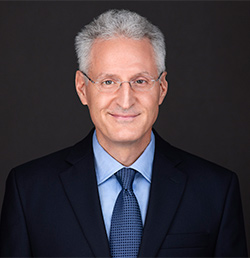Advanced Technology Lenses
What are intraocular lenses?
Intraocular lenses (IOLs) are permanent, replacement lenses placed in the eye following cataract removal. Similar to a camera lens, IOLs focus your vision and deliver a clear, crisp image.
Why advanced technology lenses?
Advanced Technology IOLs are far more advanced than the standard lenses used for lens replacement.
While standard lenses are effective in improving vision and delivering a clear image, premium lenses specifically correct astigmatism as well as distance, midrange, and near vision.
Are advanced technology IOLs right for me?
If you answer “Yes” to any of these questions, you may be a candidate for Advanced Technology IOLs.
- Are you nearsighted, farsighted, or do you have astigmatism?
- Do you want to reduce your dependency on eyeglasses or contact lenses?
- Are you scheduled to have cataract surgery in the near future?
Frequently Asked Questions
Are standard and advanced lenses covered by insurance?
Standard lenses are covered by medical insurance because they only treat the medical cataract problem and patients may still need glasses 100% of the time after surgery. Advanced technology lenses are considered elective by insurance because they go above and beyond just a medical treatment. Advanced lenses not only treat the cataract, but they will improve vision beyond a basic surgery and reduce or eliminate your dependency on glasses. Patients looking to pursue this treatment option are encouraged to learn more about the financing options available at Eye Surgery Associates.
Are there different types of lenses for me to choose from?
Yes! There are multiple types of IOLs available for patients. Each IOL type corrects vision in a unique manner, targeting certain pre-existing eye conditions and vision capabilities. Your surgeon will discuss which lens may be your best option. Eye Surgery Associates offers the following:
- Monofocal IOLs – Basic cataract lens. Will improve symptoms caused by cataracts and depending on Rx, can help improve distance vision.
- Toric IOLs – Reduces or eliminates corneal astigmatism while greatly improving distance vision in patients.
- Accommodating IOLs – Corrects vision by changing focus as the patient views objects at varying distances. Brand names: Crystalens® IOL
- Extended Depth of Focus (EDOF) IOLs – Can provide a more seamless range of vision and help patients see well at distance, intermediate, and functional near vision. Brand names: Vivity™ IOL and Symfony® IOL
- Multifocal/Trifocal IOLs – Advanced lenses that split light into two or three focus points to allow patients a greater range of vision versus a monofocal lens. Brand names: ReStor® Multifocal IOL, Tecnis® Multifocal IOL, and PanOptix® Trifocal IOL
Eye Surgery Associates is now offering a groundbreaking intraocular lens.
How long does the initial consultation?
We ask patients to allot approximately 90 minutes for general consultations and annual assessments.



